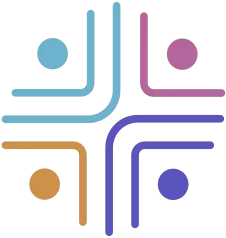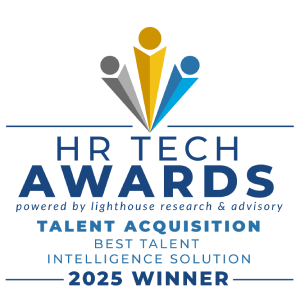Recruitment advertising has become an art form that uses imagination, strategy, and new ideas to draw the best people in a very competitive job market. Successful employment efforts not only show what a company stands for and how it works, but they also get potential workers interested and make them feel something. In this article, we will explore some of the best recruitment marketing campaigns that have left a lasting impact, providing valuable insights for HR professionals and businesses.
Content:
- What Are Recruitment Advertising Campaigns?
- Best Examples of Recruitment Advertising Campaigns
- Future Trends in Recruitment Advertising
- Conclusion
- FAQs
What Are Recruitment Advertising Campaigns?
Companies often employ recruitment advertising as one component of a larger strategy for identifying qualified candidates for available positions. These hiring campaigns go above and beyond traditional job advertisements by presenting creative tales, boosting a company’s brand, and showcasing an organization’s one-of-a-kind culture. These initiatives make use of a variety of methods, including social media, print media, video, and the internet, among others, to expand their audience and develop a powerful employer brand.
Examples of Best Recruitment Marketing Campaigns
IKEA: Assemble Your Future
Through its “Assemble Your Future” campaign, world-famous furniture company IKEA created a recruitment process that was both cutting-edge and interactive for potential candidates. The campaign utilized the well-known instructions for assembling IKEA furniture in order to create a light-hearted and approachable method of applying for jobs. This unconventional method not only attracted the interest of prospective job seekers but also brought attention to the fact that IKEA is dedicated to being creative and thinking outside of the box.
Results seen: The campaign was successful in gaining global notice and resulted in a considerable uptick in application submissions.
Lessons learned: To stand out in today’s fiercely competitive employment market, you need to embrace creativity, capitalize on your brand identity, and design an interactive application process
McKinsey & Company: The Eraser Pencil
McKinsey & Company, a management consulting business, launched a marketing campaign called “Eraser Pencil” to emphasize its dedication to creative problem-solving and innovation. The advertising campaign showed a pencil that had an eraser attached to either end, which was meant to represent McKinsey’s strategy of correcting previous errors and reconsidering potential solutions. The campaign was successful in conveying the company’s core principles and attracting applicants whose goals aligned with those of the organization.
Results seen: The ad was successful in garnering favorable responses from prospective applicants and emphasized McKinsey’s reputation for innovative thought.
Lessons learned: Make use of symbols to communicate principles, place an emphasis on finding solutions to problems, and attract job prospects who share the mission of the organization.
Google: The Foobar Challenge
The multinational technology company Google adopted a unique approach to its recruitment strategy when it introduced the “Foobar Challenge,” which consisted of a number of coding problems that were made available to anyone who entered particular search queries. Programmers and developers were the intended audience for this covert recruiting effort, and they came upon the puzzles by accident while looking for information relevant to programming. The competition not only helped identify outstanding individuals, but also created an experience that was participatory and interesting for participants.
Results seen: The campaign was successful in reaching its intended audience, as well as locating qualified programmers who were able to finish the challenges successfully.
Lessons learned: Develop fun and engaging competitions to help you find the best candidates, take advantage of nontraditional methods to fill open positions, and maintain meaningful engagement with job seekers.
Airbnb: We Accept
The “We Accept” campaign that Airbnb ran tackled the topic of diversity and inclusion head-on. In order to communicate Airbnb’s dedication to fostering an inclusive community, the company ran an advertising campaign that included photographs of a variety of people overlaid with the words “We Accept.” This campaign put an emphasis on the core principles of the organization and urged people who respect and appreciate diversity to apply for open positions.
Results seen: The campaign received favorable feedback as a result of its courageous position about diversity and inclusiveness.
Lessons learned: Address key societal concerns, bring attention to the ideals of the organization, and attract individuals who share your dedication to diversity.
Microsoft: Make What’s Next
The “Make What’s Next” campaign that was run by Microsoft had the overarching goal of encouraging young women to pursue jobs in STEM (Science, Technology, Engineering, and Mathematics) fields. In order to demonstrate Microsoft’s commitment to gender equality in the technology arena, the campaign highlighted the achievements of women working in disciplines connected to computer science and technology.
Results seen: The campaign garnered a lot of attention for the efforts it made to empower young women and encourage diversity in the world.
Lessons learned: For the purpose of motivating potential applicants, advocate for social change, encourage diversity, and exhibit success stories.
Struggling to Build Meaningful Relationships with Candidates, Across Channels?
Make your candidate database work for you and create experiences that convert. Meet MOJO Talent Engage CRM.
Learn moreGoogle: The Puzzling Billboard
The “Puzzling Billboard” campaign is a shining illustration of how Google’s recruitment approach regularly welcomes and encourages creative expression. Billboards were placed throughout cities containing difficult coding problems, and the campaign encouraged computer programmers to answer the problems for a chance to be hired by Google. This method was used to identify applicants who were skilled in coding and had a strong interest in finding solutions to problems.
Results seen: The initiative was effective in locating programmers who possessed the talents that Google was looking for.
Lessons learned: Make use of interactive challenges in order to determine certain abilities, illustrate the company’s dedication to innovation, and engage potential applicants in a distinctive manner.
Volkswagen: A Hidden Message
The “A Hidden Message” campaign that Volkswagen ran emphasized the company’s dedication to the preservation of the environment. During the campaign, billboards gave the impression of being blank during the day but, when lit up at night, showed secret information on Volkswagen’s electric car technology. This forward-thinking strategy reflected the company’s commitment to cutting-edge innovation and environmentally responsible practices.
Results seen: The ad was successful in drawing attention to Volkswagen’s commitment to environmental responsibility.
Lessons learned: Emphasize being environmentally friendly, make use of creative imagery, and match the campaign with the values and aims of the firm.
Marriott: A Personalized Careers Page
Candidates were able to browse employment possibilities at Marriott that were relevant to their astrological signs through the use of the company’s tailored careers portal. This inventive method adds a touch of personalization to the process of searching for a job, displaying Marriott’s dedication to comprehending and catering to the tastes of certain individuals.
Results seen: The campaign’s innovative and individualized approach to job seeking was praised by those who participated in the survey.
Lessons learned: Incorporate personalization, make the experience as user-friendly as possible, and show that you have an in-depth grasp of the candidate’s preferences.
Microsoft: Microsoft Math
The “Microsoft Math” campaign was directed at high school students to encourage them to consider employment in the technology sector. Throughout the course of the campaign, participants were invited to engage in a variety of mathematical activities designed to draw attention to the practical uses of mathematics in sectors connected to technology. Microsoft’s goal was to encourage youngsters to pursue professions in STEM fields by getting them involved in the company’s programs at a younger age.
Results seen: The campaign was successful in attracting the attention of young pupils and highlighting the importance of mathematics in technical fields.
Lessons learned: Place emphasis on educational efforts, early engagement with future talent, and bring attention to the actual uses of talents in areas that are important.
Get Your Hands on the Ultimate Recruitment Advertising Playbook!
Make sure you’re using the right tools and tactics to advertise your jobs in today’s competitive market.
Get it here!Future Trends in Recruitment Advertising
As the recruitment landscape continues to evolve, several trends are emerging that will shape the future of recruitment advertising:
Video campaigns
Video content is rapidly becoming a cornerstone. As candidates increasingly seek insights beyond traditional text-based job descriptions, companies are harnessing the power of videos to provide a window into their organizational culture, work environment, and employee experiences.
These dynamic visual narratives not only allow potential candidates to visualize themselves as part of the team but also humanize the company, creating a more authentic connection between employers and job seekers.
Virtual reality (VR) and augmented reality (AR)
Virtual reality (VR) and augmented reality (AR) technologies are transforming the way candidates engage with prospective employers. By offering immersive experiences, these technologies enable candidates to virtually step into a company’s workspace, projects, and culture.
This empowers candidates to make more informed decisions about their potential fit within an organization, while also highlighting a company’s commitment to embracing innovative solutions for candidate engagement.
AI-driven recruitment
Artificial intelligence (AI) is revolutionizing the recruitment landscape by improving processes and streamlining candidate selection. AI algorithms analyze vast datasets to identify candidates whose skills, experiences, and cultural attributes align with a company’s requirements.
This not only expedites the screening process but also ensures a more accurate match between candidates and roles, ultimately leading to higher retention rates and a more efficient recruitment pipeline.
Check out MOJO Pro for targeted recruitment with AI-assisted job ads and Ad savings of 25%+ with 33%+ more qualified candidates.
Diversity and inclusion
In an era characterized by increased focus on diversity and inclusion, recruitment campaigns are embracing these principles to attract a broader spectrum of candidates. Companies recognize that a diverse workforce fosters innovation and a more holistic perspective. To reflect these values, campaigns are highlighting efforts to create an inclusive workplace environment where candidates from all backgrounds feel valued and represented.
Remote work emphasis
The surge in remote work has spurred a transformation in recruitment advertising. With remote and hybrid work becoming the norm, campaigns are showcasing companies’ remote work policies, technology infrastructure, and the benefits of flexible work arrangements.
Companies are better positioned to attract talent from diverse geographical locations by addressing concerns and promoting the advantages of remote work.
Conclusion
Businesses attract and engage potential applicants differently, thanks to new advertising efforts.
These initiatives have been successful in connecting with individuals who have the same values and views as the organization, because the emphasis is placed on creativity, innovation, and individualization.
Companies looking to employ top individuals will need to keep ahead of the curve and try new approaches. This is where Joveo comes in to get your job ads in front of the right people – at the right place and time, for the right price! With our AI-driven approach and campaign automation, you can spend with precision on sources that deliver.
Discover the power of our game-changing, end-to-end talent-sourcing platform.
See us in action to boost your company’s productivity. Follow us on Twitter and LinkedIn for more hiring insights!
FAQs
What is a social media recruitment strategy?
Employing various social media platforms as part of a recruiting strategy entails using such channels to attract, engage, and ultimately hire potential applicants. Businesses are increasingly turning to social media platforms to publicize aspects of their organization, such as values, job vacancies, and culture, in order to build a powerful employer brand.
How do you attract the best people?
Attracting the most qualified applicants is essential and can be facilitated by showcasing a company’s distinctive culture and principles, as well as the opportunities for professional advancement. Employing innovative recruitment efforts, offering competitive compensation, and prioritizing employee development can help attract top talent.
What type is recruitment advertising?
Recruitment advertising is a subcategory of recruitment strategy that involves using creative and smart advertising campaigns to attract potential applicants. These efforts go beyond the typical practice of advertising jobs online and instead place an emphasis on branding, storytelling, and cultural compatibility.















